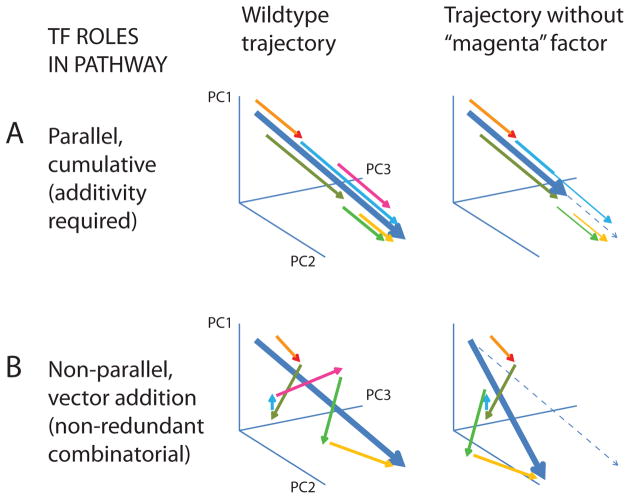Figure 7.
Different types of combinatoriality for transcription factor action in T-cell specification: two theoretical possibilities. Different gene expression patterns of cells at different stages are shown as a trajectory from an initial gene expression pattern at one point in a three-principal-component space to a final gene expression pattern at another point (thick dark blue arrows). Two models are shown in which the effects of different transcription factors on gene expression are shown as different colored vectors propelling the cells’ gene expression profiles along this path, where the individual roles of the factors differ. (A) A model in which all factors promote the T-cell program faithfully (vectors all parallel to the main trajectory), but in which participating factors are required to work in AND logic to drive developmental progression from start to finish. Left, parallel but stage-dependent effects of factors push cells along the unique trajectory of gene expression change. Right, if factor represented by magenta vector is removed, development halts but is still on the canonical track. Green and yellow vectors, and part of the light blue vector, are depicted as thin arrows in this case to indicate the constraint that these factors cannot work when the magenta factor is absent. (B) An alternative model in which individual vectors do not simply work to promote the T cell fate (not individually parallel to main path), but all have a component that can contribute to the main path and/or counteract another factor’s tendency to deviate from the main path. Although the panel shows the arrows operating sequentially to show their individual directions more clearly, note that this model also works well if they often act in combinations in overlapping time frames like the factors in A. Left, under normal conditions the resultant of adding the disparate transcription factor activities together pushes the cells along the main path. Right, if factor represented by magenta vector is removed, vector addition still advances the cell to change its gene expression pattern, but now it no longer follows the T-cell path.

